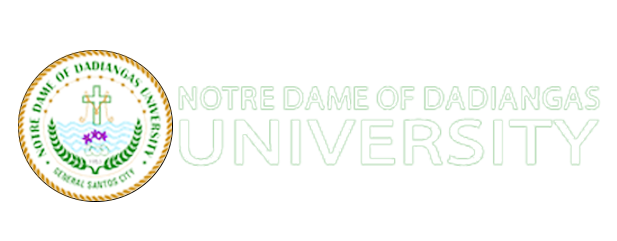This descriptive study evaluated the Community Development Plan (CDP) of the College of Health Sciences (CHS) in Sitio Daan Banwang, General Santos City. Respondents of the study included the community people of Sitio Daan Banwang, and the faculty, alumni, and stakeholders of the Community Involvement Services (CIS) Program of the CHS.
The data analysis using weighted mean showed that the degree of community empowerment got an average mean of 4.69 interpreted as Highly Extensive. Moreover, the sustainability of livelihood projects gained an average mean of 3.45 interpreted as Moderately Sustainable. The health status of vulnerable members of the adopted community had an average mean of 4.00 which is interpreted as Highly Impact. While in terms of the participation of faculty in the CDP of the CHS, it gained an average mean of 3.85 which is interpreted as Highly Involved. The alumni participation in community development plan gained an average mean of 3.21 categorized as Moderately Involved and the participation of the stakeholders in community development plan obtained an average result of 3.83 which is characterized as Highly Involved.
The study concluded that the community activities and projects in the community are highly empowering; livelihood projects implemented to the adopted community have moderate impact; the health status of vulnerable members of the adopted community has a high impact on the CDP of the CHS; the Faculty and stakeholders were highly involved in the CDP of the CHS and the alumni were moderately involved in the CDP of the CHS.
The study recommended that the community development plan be enhanced, strengthened, and improved especially on the implementation of the livelihood program and the health education programs to the community people in order to help improve their quality of life. Reinforcing the strong linkages and partnership with the stakeholders of the NDDU especially with the Notre Dame Business Resource Center Foundation, Inc, (NDBRCFI) and the CHS to have a smooth implementation of the community development plan was also recommended.
Introduction
Community involvement is the process of engaging in dialogue and collaboration with community members. Community has a central part to play, enabling practitioners, managers and policy-makers to identify those in greatest need and to ensure that health care resources are used to maximize health improvement (WHO, 2010). Community participation in health is a complex entity that has been examined extensively in the literature and continues to be of great interest among community health workers. Authors review the value of community involvement in health and provide a detailed examination of the challenges facing its implementation and sustainability.
In 1978, the World Health Organization placed community participation squarely at the centre of their strategy to achieve Health For All By The Year 2000. Many countries also have adopted community involvement as the means by which to address important health problems. This is exemplified by national efforts to establish and strengthen mechanisms for community involvement in health through social policy, legislation, and other means. The essential question is how successful have these efforts been.
As applied to the nursing curriculum, the Community Organizing Participatory Action Research (COPAR) model is particularly useful, as it enables students to see the subject of health in light of bigger social issues. Through COPAR, nursing students will understand and appreciate how different economic, political and cultural factors affect health.
The Notre Dame of Dadiangas University, College of Health Sciences Community Involvement Services (CIS) developed a program for distant areas that need assistance in terms of health maintenance and supervision as well as livelihood programs. With the help of the faculty of the Health Sciences department and students, different community programs were implemented to enhance the quality of health and living of the CHS adopted community. It was in the year 2005 that the College of Health Sciences adopted the community of Sitio Daan Banwang, Barangay Upper Labay, General Santos City. The adoption was upon the recommendation of the City Health Office (CHO) based on the healthcare needs of the community. Moreover, during the community exposure of the students at Sitio Daan Banwang for the past 5 years , there is no research study or even evaluation conducted on the impact of the Community Involvement Services to the communities.
The purpose of this study is to determine the extent, nature and quality of community involvement services intervention in the adopted community for the five years. It is stipulated in the last phase of the COPAR process that the organizers or committees present in the implementation of the COPAR are expected to evaluate their own programs. Therefore, it is the responsibility of CHS to conduct an evaluation every after the exit to the community.
In addition, it was also part of the Philippine Accrediting Association of Schools and Universities (PAASCU) recommendation to assess the impact of the CIS programs rendered by the College of Health Sciences to the Sitio Daan Banwang community. The result of this study will be of great help to enhance the future programs of the CDP in partnership with the NDBRCFI.
Statement of the Problem
This study conducted an evaluation of the Community Development Plan of the CHS to its adopted community from 2005-2010.
Specifically, this study answered the following questions:
- What is the current status of the five (5) year community development plan, as to:
- extent of community empowerment;
- sustainability of livelihood programs; and
- impact of the health status of vulnerable members of the adopted communities?
- What is the extent of participation of the :
- faculty;
- alumni; and
- stakeholders?
- Based on the findings of the study, how can the Community Development Plan be improved, in terms of:
- extent of community empowerment;
- sustainability of livelihood programs;
- impact on the health status of vulnerable members of the adopted communities; and
- participation of the students, faculty, and alumni?
Research Methodology
This study utilized a descriptive survey method to evaluate the community extension services of the College of Health Sciences for the past five (5) years at Sitio Daan Banwang, Barangay Upper Labay, General Santos City. It identified the significant events, including the extent of community empowerment, sustainability of livelihood programs, and impact of the health status of vulnerable members of the adopted communities as well as the participation of the faculty, alumni, and stakeholders in the CDP of the CHS.
There were four (4) sets of respondents in the study; the community people, the faculty, alumni, and stakeholders. The first set of respondents were the residents of Sitio Daan Banwang who were the primary recipients of the CIS program of the College of Health Sciences. The respondents are those residents who lived in the area since 2005-2010. The second set of respondents composed of the faculty, the alumni (2005-2010) and stakeholders of the College of Health Sciences.
A questionnaire adopted from the study of Espartero, S (2018) on the Community Development Plan Evaluation of Barangay Kawas, Alabel Sarangani Province. There were two (2) sets of instruments used in data gathering. The questionnaire sought to determine the status of the five year development plan of the CHS as to the level of community empowerment, sustainability of livelihood programs, impact of the health status of the vulnerable members of the adopted communities and the extent of participation of faculty, alumni and stakeholders.
To gain a broad range of views on the research topic and to strengthen the data collected from the questionnaire, a focused group discussion (FGD) was also utilized. Respondents for the FGD are those community people who received the services rendered by the NDDU College of Health Sciences students and faculty in 2005-2010. Focus group discussion was used to determine the experiences of the Barangay officials and the residents on the implementation of the programs and projects done by the NDDU College of Health Sciences.
The Weighted Mean was used utilized in measuring the central tendency of the distribution in assessing the community empowerment, sustainability, impact of the health status and involvement of the students, faculty, and alumni.
Summary of Findings
The following are the salient findings of the study:
The degree of community empowerment got an average mean of 4.69 interpreted as Highly Extensive. Moreover, the Sustainability of livelihood projects gained an average mean of 3.45 interpreted as Moderately Sustainable. The health status of vulnerable members of the adopted community had an average mean of 4.00 interpreted as Highly Impact. While in terms of the participation of faculty in the CDP of the CHS, it gained an average mean of 3.85 which is interpreted as Highly Involved. The alumni participation in community development plan gained an average mean of 3.21 categorized as Moderately Involved and the participation of the stakeholders in community development plan obtained an average result of 3.83 characterized as Highly Involved.
Conclusions
Based on the findings of the study, the following conclusions are made:
- The community activities and projects are Highly Empowering.
- The livelihood projects implemented to the adopted community have moderate impact.
- The health status of vulnerable members of the adopted community has a High Impact on the CDP of the CHS.
- The faculty and stakeholders were Highly Involved in the CDP of the CHS.
- The alumni were Moderately Involved in the CDP of the CHS.
Recommendations
Based on the findings and conclusions of the study, the following recommendations are given:
- Continue programs that create community empowerment;
- Enhance the implementation of livelihood programs that are suitable and sustainable to the community. Proper selection of livelihood programs which are income generating. The faculty, alumni, and stakeholders should orient the community people about the proper implementation of the livelihood program so that it will sustain in the community;
- Maintain and improve the implementation of health education programs to the community people in order to help improve their quality of life;
- Strengthen the involvement of alumni in every community development plan of the CHS. Regular information dissemination and continuous update be given to the alumni for them to aware of the activities of the school or the CHS;
- Reinforce the linkages with the stakeholders of the NDDU especially with the NDBRCFI. Deepen the partnership the CHS and the NDBRCFI to have a smooth implementation of the community development plan.
References
World Health Organization (2010). A framework for community health nursing education. Retrieved, October 31, 2018, From, http://apps.searo.who.int/PDS_DOCS/B4816.pdf
WHO (2018). Community Empowerment. Retrieved, October 27, 2018, From,
http://www.who.int/healthpromotion/conferences/7gchp/track1/en/
WHO (2001). Community Health Needs Assessment. Retrieved April 10, 2018,
http://www.euro.who.int/__data/assets/pdf_file/0018/102249/E73494.pdf


